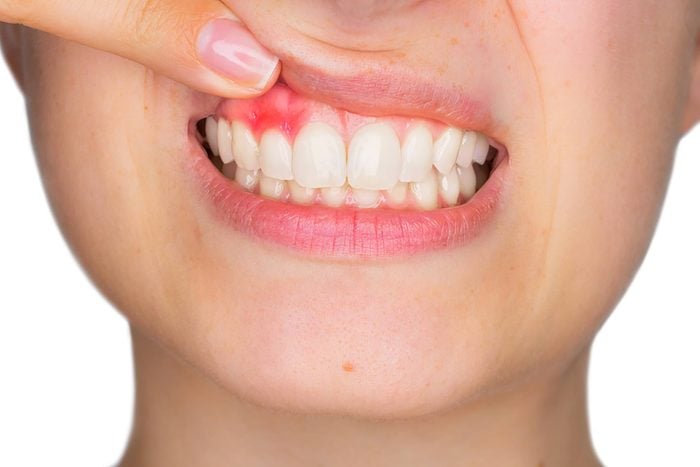
Silent signs of gum disease
Periodontitis (better known as gum disease) is what happens when gingivitis (better known as inflamed gums) is untreated. That’s why it’s important to recognize the early signs of gum disease. Dentists urge people to look out for the following symptoms.
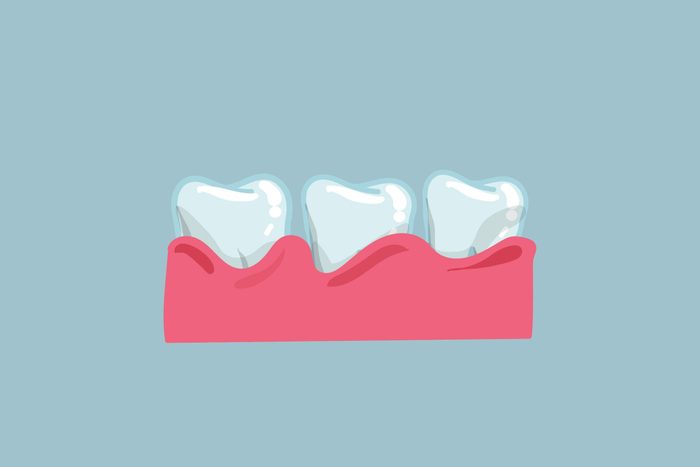
Red or swollen gums
Inflammation in the form of red, puffy, or tender gums (gingivitis) could be a sign of periodontal disease or gum disease. “Inflammation or discomfort is caused by bacteria that accumulate around the teeth and proliferates when it is not mechanically removed by flossing, brushing, and your six-month dental cleaning appointment,” says Mazen Natour, DMD, a prosthodontist in New York City. It’s important to treat it so it doesn’t advance to periodontitis, a more serious form of gum disease that causes gums to recede from teeth and form pockets that can become infected. (These are surprising ways you might be brushing your teeth wrong.)
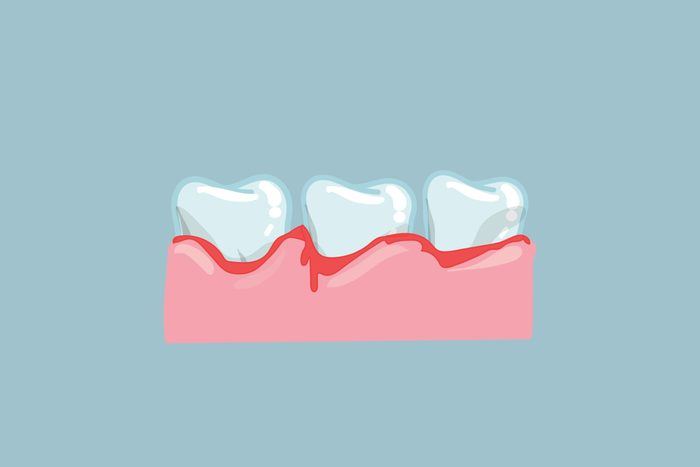
Blood in the sink
If you spit out blood after brushing and swishing, take note. “Bleeding after tooth brushing is a big sign and can signal gingivitis,” says Lance Vernon, DMD, senior instructor at Case Western Reserve University School of Dental Medicine. Gingivitis is a mild form of gum disease that causes bleeding gums, especially after brushing or eating. Luckily, it’s usually reversed with daily brushing and flossing, as well as regular cleanings by a dentist.
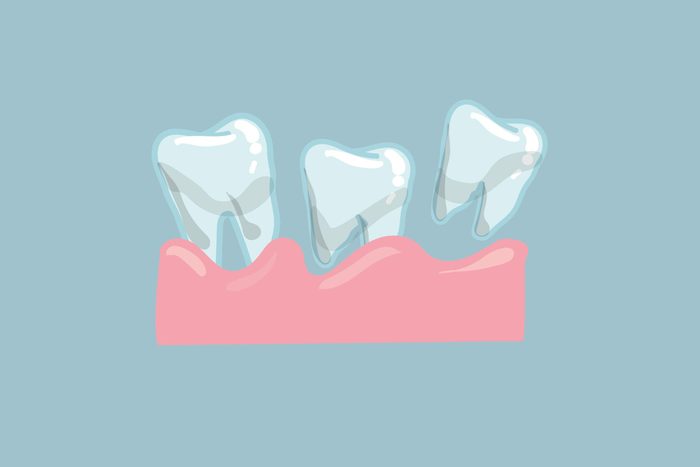
Wiggly teeth
Loose teeth that move slightly when lightly pushed against by your tongue or finger is another sign the disease may be progressing, says Dr. Vernon.
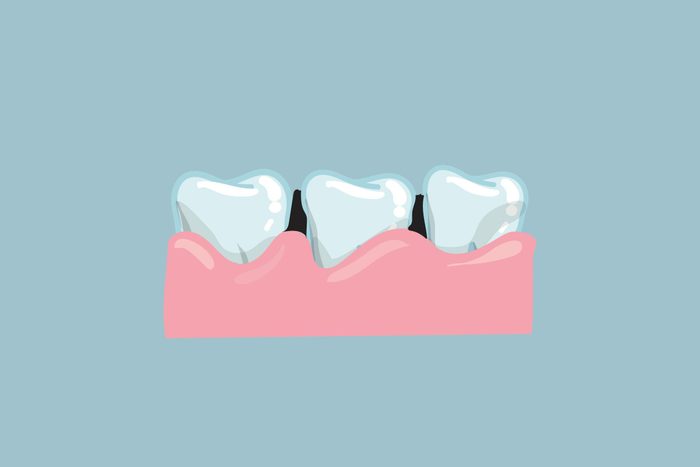
Gum recession
Smile big and take a look in the mirror: if you notice spaces between teeth that look like little black triangles, that’s a sign that gums are receding, says Dr. Natour.
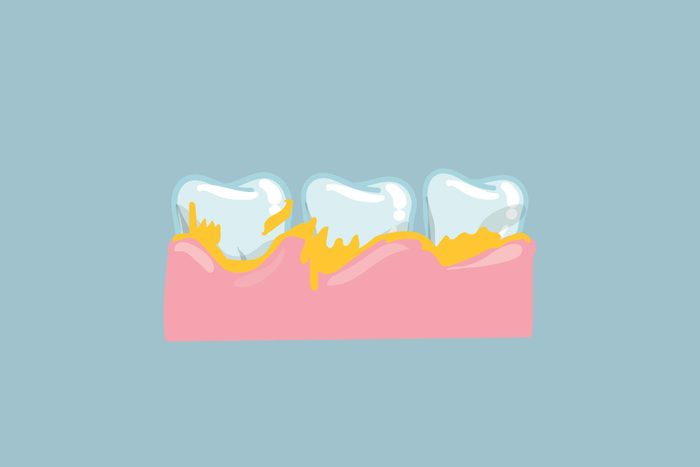
Plaque buildup
“The combination of routine dental visits [ideally every six months] and daily brushing and flossing can prevent plaque buildup, which contributes to gum disease,” says Dr. Natour. Plaque is the sticky film that forms on teeth—if not adequately removed by regular brushing and flossing, it can turn into tartar, which may harbor bacteria that leads to gum disease.
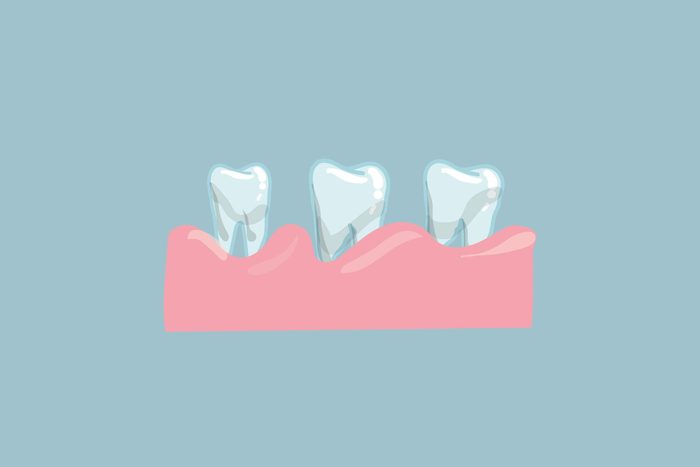
Bone loss
Untreated gum disease can lead to more serious symptoms such as bone loss, says Dr. Natour. “This early onset inflammation will progress, and if left unchecked and fed by the various sources of sugars from our diet, will evolve into a more aggressive bacteria,” he says.
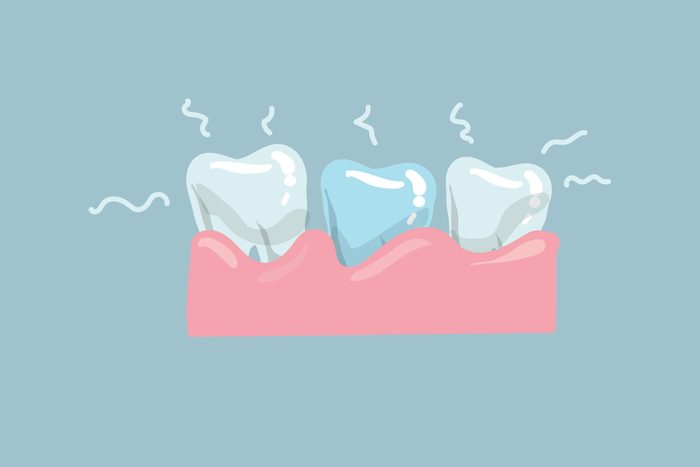
Sensitive teeth
While tooth sensitivity could mean you’re simply brushing too hard, it’s also a symptom of gum disease. “Receding gums expose the root of the tooth to the oral cavity, which will start making teeth more sensitive to hot and cold food or beverages,” says Dr. Natour.
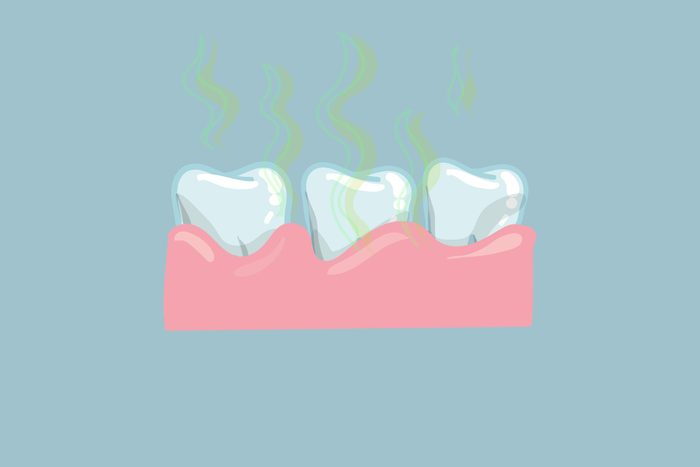
Bad breath
If you’ve never had chronic bad breath but notice it suddenly seems to constantly be a little less than fresh, it could be a sign of gum disease. Dr. Vernon says to watch out for a scent similar to alcohol or rotting apples, which is caused by bacteria migrating below the gum tissue, an area difficult for toothbrushes and floss to reach.
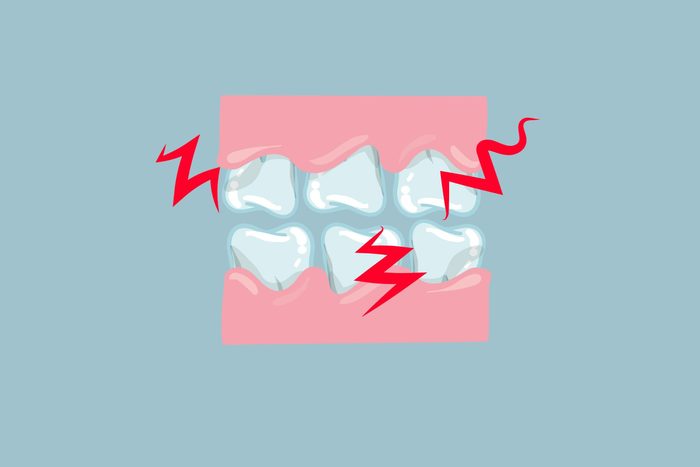
Teeth grinding
While not technically a symptom of the disease, grinding or clenching your teeth is a risk factor for gum disease. These actions place excessive force on the supporting tissues of the teeth, speeding up the rate at which they’re destroyed.
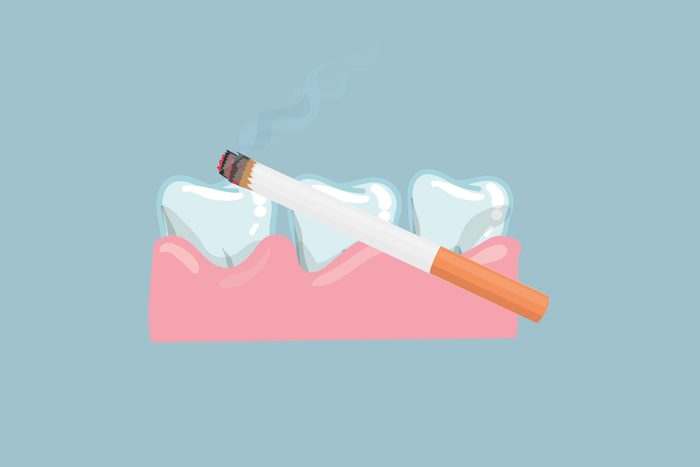
Smoking
In case you need one more reason to ditch the cigarettes, chew on this: Research has found that smokers have twice the risk of gum disease in comparison to non-smokers. Plus, tobacco products damage teeth and gums, providing an open door for infection-causing bacteria that can cause gum disease. Next, check out what you need to know before your next dental appointment.